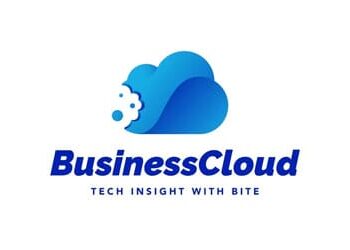I sat down with Director of Development, Dec Norton, recently for a series of interviews about software development at CareLineLive. You’ll find Dec’s notes plus the video clips below.
The CareLineLive development team
Dec has headed the development team at CareLineLive since the business started; initially as the sole developer, but as the software gained traction we started to build out a full team.
Currently (early 2025) there are 11 developers working on CareLineLive, consisting of backend and frontend developers, quality assurance (QA) engineers and mobile app developers.
Adjacent to the development team is the product team, led by Sean Orrell. It’s an important part of the development story, as the product team will identify any requirements, perform discovery and research, and ultimately give us designs and a specification to work from. The introduction of a product team was a game-changer for us in terms of productivity.
“We tend to hire based on individual merit as opposed to qualifications. Coming from a self-taught background myself, I tend to look for qualities in others that I also recognise in myself. Showing initiative and a willingness to persist through a problem are big green flags for me. This also means that we’ve hired from a range of different backgrounds, from individuals who have retrained a bit later in life through to those who had recently moved to the UK from Ukraine, Hong Kong and Nigeria. We’re now also looking to hire a team based in Australia.”
What has been the development focus in recent months?
Dec describes the past 12 months as “a bit of a wild ride in terms of development”. The team have been working on:
- Mobile app: new rota
- Security: Single Sign On and Multi-Factor Authentication
- Functionality compliant with our status as a Digital Social Care Records approved supplier (see below)
- GP Connect
- PRSB (Professional Record Standards Body) compliance
- Roster Plans and Bulk Updates
- Push notifications
- New API
- Auditing tools
- Integration of funding tools for our Australian customers
Why so much focus on DSCR?
Digitising Social Care is an initiative being run by the Department of Health and Social Care, and involves a collaboration between many different entities. NHS England, NHS Digital, Social Care Providers, and System Suppliers for Social Care.
The overarching goal of the programme is to encourage adoption of digital technologies by social care providers in England. Historically the sector has been predominantly paper-based, relying on manual processes that differ between organisations.
The programme provides an Assured Supplier catalogue, which gives care providers looking to implement a solution a selection of software systems that are guaranteed to meet a baseline set of requirements and standards that help the care providers to deliver a service that meets modern standards.
For software suppliers (such as ourselves), in order to become an assured supplier and retain our status as such, there are a number of technical requirements that we must meet and provide evidence for. Some of which we had already implemented, but there were a number of requirements that were new to us (and many other suppliers). Meeting and evidencing these requirements has contributed quite significantly to our workload over the past 24 months; however we have gained Assured Supplier status and intend to stay that way!
Next on the list of DSCR standards is MODS – the Minimum Operational Data Standard. Its goal is to ensure that any system supplier on the DSC catalogue has the ability to capture a baseline set of data to support direct care. It’s a bit more of a push into the clinical side of social care, however its intention is to lay the groundwork for future interoperability opportunities that would allow seamless communication between care providers and other third party organisations.
A large portion of our roadmap was influenced directly by the Digital Social Care Records program. It benefits care providers by facilitating more of an even playing field when choosing a software solution, but it does mean that we perhaps haven’t been able to act on some of our own roadmap items as soon as we wanted to.
What is your view on emerging technologies in home care?
“One of the reasons I got into this career is because I’m a tinkerer and a builder at heart. I love seeing and experiencing new technologies and finding the different ways they could help solve problems.
Before working on CareLineLive, I was freelancing and often worked on projects that had a finite timescale. I felt that I never had the opportunity to continuing nurturing and improving the project.
Being the technical lead for CareLineLive has satisfied that itch to no end. Albeit we might not always be dealing with the flashiest technologies – AI (Artificial Intelligence) in particular is a prevalent topic at the moment (Large Language Models in particular) – there’s so much more going on in the world of computing that isn’t picked up in the headlines.
It’s my responsibility to ensure any solutions that we implement are suitable both for our users and the business alike. There are still a lot of problem areas in the care industry that AI isn’t an appropriate solution for, yet. Social care is predominantly about the humans involved; the care workers, the care recipients and their loved ones. If you try to replace too much of their journey with Artificial Intelligence, you risk losing the person-centred approach to care that is needed.”
You can see excerpts from Dec’s interview below.




